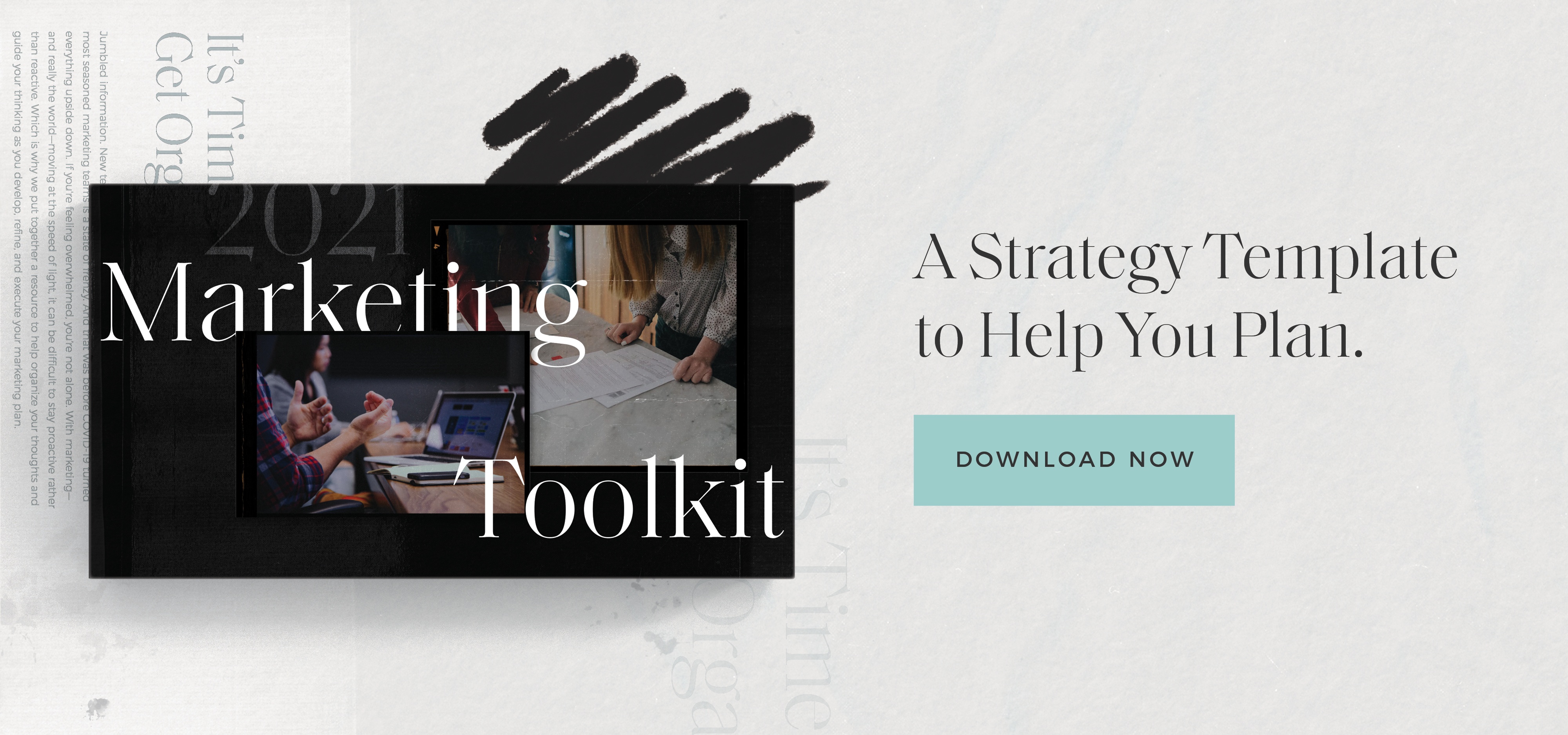Starting a brand-new marketing campaign is exciting. It’s also anxiety-inducing. Before a single prospect sees an ad, you will already have invested loads of time and energy and money into it, and while the potential benefits are huge, the risks can be too. Wouldn’t it be nice to know whether or not your campaign will be a success before it begins? Obviously, yes.
That’s not completely possible, obviously—that kind of predictive power would probably be best suited for Vegas anyway, or at least the stock market. But you can get a good sense as to whether or not your marketing campaign concept has legs before you dive in headfirst. Here’s how.
Step 1: Do the research first to know the lay of the land
Starting out from a place of ignorance means your marketing campaign is more likely to fail from the start. The less you know about where you stand right now—your own marketing, your competitors and their marketing, the industry as a whole—the more likely it is that you’ll step on a rake when your campaign goes live. You should be making decisions about your marketing campaign concept based on real knowledge, not gut feelings and guesswork.
I’d say there are three primary ways you’ll want to execute this research: competitive analysis, a communications audit, and analyzing brand perception, awareness, and associations.
Competitive analysis
Competitive research will tell you two main things: who you’re really competing against, and what they’re doing in the market. You might have an idea already of who your competitors are; for instance, if you tend to lose deals to two or three specific businesses over and over again, they probably belong on this list. But there might be others you don’t know about currently, particularly if you’re competing for online attention regarding certain keywords. There might even be some competition there that isn’t in your geographic or industry footprint, and that’s important to know too.
Knowing what the competition is doing in the market isn’t just so you can copy their work—in fact, it’s kind of the opposite. Knowing the norms and trends among your competitors can show you what, if anything, they’re missing or leaving out of their own marketing, which is a gap that you can exploit by providing it to your mutual audience. Giving the people something they’re looking for—and being the only one to do it—is a great way to stand out.
Communications audit
The same way you’ve analyzed your competitors’ marketing, so too should you analyze your own. Dig deep into everything you do, and make sure you’re maintaining brand consistency across all of it. See what’s working today, see what isn’t getting it done, and see where there are gaps within your marketing. One way to make sure your campaign is actually accomplishing something is to set out to fill one of those gaps. But honesty is the best policy here—it doesn’t do any good to pretend that your marketing is amazing if it really isn’t that good. Fix what needs to be fixed, don’t let issues fester.
Brand perception, awareness, and associations
Assessing the performance of your brand might take a little extra work—it’s likely you’ll need to talk to people, both inside and outside your organization, in order to get real answers, rather than just being able to make the final call on your own.
When you talk to people, do they already know who you are, or do you have to educate them? What, if anything, do they know about you and what you stand for? Do they think of you as a luxury brand, or an economy brand, or something in between? What other brands do they associate you with, and who do they see you as unrelated to or opposed to?
The answers to these questions will guide you to the audience you should be serving, the audience you are serving, and whether the two coincide with each other. Ideally, they will, and your campaign concept can simply live in the world your other marketing lives in. But in plenty of cases you’ll find that your brand isn’t talking to the right people, or there’s an unserved or underserved segment of the potential market that your brand could be looking towards. Knowing this before you start your campaign could change everything, so it’s important information to have on hand.
Step 2: Make sure all the pieces are in place
A successful marketing campaign concept is typically going to have certain parts. So one way to increase your chances of success is to ensure that any concept you plan to move forward with has all of them. For Content Marketing Institute, Robert Rose talks about the four parts to a good story: as he puts it, “the human,” “the goal,” “the resistance,” and “the truth.”
Each of these fits a critical part of what a good concept is going to look like.
The human
In most cases, the story’s hero is your target audience. At the very least, the hero must be relatable to that audience. It’s the person who’s struggling, whose pain can be alleviated by your business and the product or service that you provide. No matter what, the center of the story should be a person, not just a bland take on your industry or product.
The goal
This aligns with what you’re offering to your audience. Again, that shouldn’t mean your product or service. It’s the solution to the problem they’re looking to solve, or a problem they didn’t know they had that you’re showing them. For us, as a marketing firm, the goal is increasing sales, or generating interest in a business that’s going through a period of plateauing revenue.
The resistance
This is the problem that your “goal” is solving. It’s the low sales numbers that marketing can increase, or the plateauing growth that marketing can turn into an arrow that points up and to the right again.
The truth
This is your differentiator. It’s the reason that the reader should pick you over your competitor. And it’s not price, or your product’s features and your service’s benefits. People’s truth isn’t usually going to be logical, it’s going to be based more in emotion. The vast majority of the time, we choose emotionally and then rationalize that choice. So lean into that.
Why do these things matter? If your concept is telling a story, and the story has all these parts, it’s a lot more likely to be successful. A campaign built around the concept that “this widget is the best widget out of all the widgets” might get attention. It might even drive sales. But a campaign built around the concept that “this widget changed Johnny Public’s life—here’s what he went through, and here’s how his problem was solved” is simply going to be much stronger. Knowing that your concept contains the parts needed to tell a smart and touching story means knowing it’s going to work.
Step 3: Figure out the “worst case scenario”
I have some bad news for the more optimistic marketers out there: things are almost guaranteed to go wrong with your next marketing campaign. That doesn’t mean that it’s going to be an abject failure, it just means that Murphy’s Law usually tends to win out. So it’s smart to be ready for things to fail, and have ready solutions to problems when they do pop up.
This should be a baked-in part of your concepting process, ideally. This Harvard Business Review article suggests “war-gaming” your decisions before moving forward with one concept or another. You can pressure-test a concept like this in a number of ways; for example, you can assign a team, led by an accomplished manager like a creative director, to try to take down your idea. Poke holes in it, figure out how they might combat your marketing if they were in charge of the marketing team of one of your competitors. Then the team that originated the concept can take that information and make adjustments. If the “opposing team” poked holes, patch them. If they devised a defense against your plan, change your plan of attack to compensate.
Of course, no matter how hard you try, it’s going to be pretty difficult to nail down every potential issue you’ll come across. There will still be unexpected problems, more than likely. But beating down every path you and your compatriots can find will help you build a plan for as many possible worst case scenarios as you can think of beforehand—meaning you’ll be more ready to handle them, and possibly other unexpected issues as well.
Setting a good foundation
There’s no real guarantees in life, or in business. You can do all the preparation and planning in the world, and there’s still a reasonable chance that something will go wrong somewhere along the way. This is, of course, not ideal, but it doesn’t mean that you shouldn’t try to be as ready for anything as you can be.
Your creative concepts shouldn’t just be thrown together based on instinct and your gut. They can be useful at the start, but if you want to be sure you aren’t simply wasting loads of time and effort, you need to do more to ensure that what you’re planning will work. You need to know the lay of the land in your industry, from your competitors down to your own past work. You need to know the parts of a good story, and ensure yours has them all. And you need to pressure-test your idea, and see how smart people might try to beat it.
You’re not going to be able to guarantee that your concept is going to lead to a massive marketing success for your team. But doing the prep work beforehand to make sure that your big idea is robust and can perform in the market will go a long way towards ensuring each and every campaign you run is a winner.





